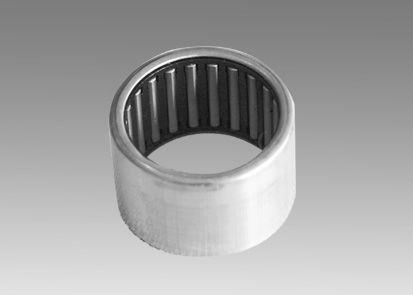
10 月 . 12, 2024 02:01 Back to list
what are deep groove ball bearings
Understanding Deep Groove Ball Bearings
Deep groove ball bearings are one of the most commonly used types of rolling bearings in machinery and engineering applications. Renowned for their versatility and reliability, these bearings can accommodate radial and axial loads in both directions. Their design and functionality make them indispensable in various sectors, from automotive to industrial machinery.
Design and Structure
Deep groove ball bearings consist of an outer ring, an inner ring, a set of balls, and a cage (or separator) that holds the balls at equal intervals. The defining characteristic of deep groove ball bearings is the deep raceways on both the inner and outer rings, which allow for higher load-carrying capacity and enhanced stability. The balls, which are typically made of high-carbon chrome steel or stainless steel, provide smooth operation and reduced friction.
The geometry of deep groove ball bearings can vary, but they generally feature an inner diameter, an outer diameter, and a width that define their size. They are available with or without shields or seals, which can help protect against contaminants and retain lubrication. This variety allows for their usage in different environments, whether they involve high speeds, heavy loads, or contamination.
Performance Characteristics
One of the primary reasons deep groove ball bearings are popular is their ability to handle both radial and axial loads. Unlike some bearing types that are limited to one type of load, deep groove ball bearings offer flexibility, making them suitable for a wide array of applications. They can operate efficiently under high speeds with low friction, and their design allows for thermal expansion.
Moreover, deep groove ball bearings can be classified into several types based on their construction, including single-row, double-row, and angular contact varieties. Single-row deep groove ball bearings can handle moderate axial loads, while double-row types are designed for applications requiring higher load capacities. Angular contact bearings, on the other hand, are tailored for handling substantial axial loads in one direction, making them ideal for specialized purposes.
what are deep groove ball bearings

Applications
The applications for deep groove ball bearings are extensive, ranging from household appliances to high-performance machinery. In the automotive industry, these bearings are found in engines, transmissions, and wheels, where they ensure smooth movement and reduce wear over time. In the industrial sector, they are used in conveyor systems, pumps, and electric motors, demonstrating their versatility.
Furthermore, deep groove ball bearings are critical components in the manufacturing of electronics, such as hard drives and cooling fans, where precision and reliability are paramount. Appliances like washing machines and vacuum cleaners also utilize deep groove ball bearings, capitalizing on their ability to reduce noise and enhance efficiency.
Advantages
The advantages of deep groove ball bearings are numerous. Their simple design allows for easy installation and maintenance, leading to lower operational costs. The bearings are also highly durable, able to withstand considerable wear and tear, which translates to extended service life. Additionally, the standardization of deep groove ball bearings means that they are readily available and can be easily replaced.
Another significant benefit is their ability to run at high speeds while keeping vibration levels low. This characteristic is essential not only for performance but also for the overall longevity of the machinery in which they are installed. The deep raceways also allow for better load distribution, further enhancing their performance under different operating conditions.
Conclusion
In conclusion, deep groove ball bearings are a vital component in many mechanical systems, offering unmatched versatility and reliability. Their unique design, combined with the ability to manage both radial and axial loads, makes them a preferred choice across a myriad of applications. As industries continue to demand higher performance and efficiency, deep groove ball bearings will undoubtedly remain an essential element in engineering and manufacturing processes, underscoring their importance in modern technology. Whether in a simple household appliance or complex industrial machinery, these bearings are integral to ensuring smooth and efficient operation.
Latest news
-
Unlocking Efficiency with Spherical Roller Bearings
NewsOct.29,2024
-
The Ultimate Guide to Thrust Ball Bearings
NewsOct.29,2024
-
The Power of Thrust Roller Bearings: Engineered for Excellence
NewsOct.29,2024
-
The Power of Deep Groove Ball Bearings for Your Application Needs!
NewsOct.29,2024
-
The Power and Performance of Cylindrical Roller Bearings
NewsOct.29,2024
-
High-Quality Ball Bearing Manufacturing Machines
NewsOct.29,2024
